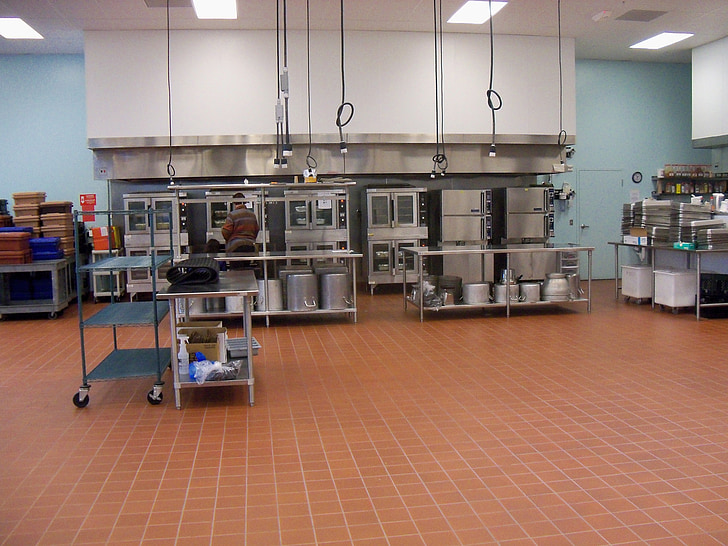A kitchen island was formerly the focal point of every fully functional kitchen. Once its room with a marble-topped area for cooling meat and dairy products, the walk-in freezer has now fallen out of favour due to the prevalence of refrigerators in homes.
Nonetheless, kitchen pantries are making a big comeback in contemporary dwellings. Although they aren’t strictly necessary for preserving food, cold storage units nevertheless provide a flexible storage solution.
The Larder is a unique area of the kitchen where fresh and cooked foods that may spoil quickly are kept, as well as where cold foods are processed and prepared.

Functions of larder kitchen.
The Larder, often known as the Garde Manger or the Cold Kitchen, is a section of a commercial kitchen used for:
1. All uncooked foods need to be stored at a temperature of -18 degrees Celsius.
2. The area where cold appetisers, cold meats, cold sauces, salads, etc., and other cold items on the menu are kept.
3. The Larder cannot function well unless it is positioned in a cool spot that is not too far from the hot Kitchen.
4. The space needs to be bright, airy and ventilated.
5. It needs to be big enough so workers can move around easily and cleanly while they work their shifts.
6. It should have all the fixtures, machines, tools, etc., that are required for the quantity and quality of work expected of it.
what sets a larder apart from a pantry?
Both kitchen pantries and larders can be used to store food. Traditionally, the former was used to store perishable goods, while the latter was used to store more long-lasting items like flour, preserves, crockery, and linens. However, you may also combine the two to make a pantry/larder where you can store various foods and kitchen supplies.
Different types of larder kitchens.
Freestanding kitchen larder
Separate from the rest of your cabinetry, freestanding kitchen larders are a beautiful addition to a traditional modular kitchen. Several freestanding pieces, for instance, can give one of our Original kitchens a touch of subtle character.
Built-in kitchen Larder
This larder style is designed to coordinate with your cabinets and is ideal for a contemporary kitchen like our Linear. Having a built-in larder also makes it simpler to instal additional outlets and inside lighting.
Breakfast Dresser
The breakfast dresser is an excellent choice for individuals who want a more classic aesthetic, as it is reminiscent of a larder. All of your food and cooking utensils may be stored neatly and easily in the concealed top section of this lovely item, which is accessible via folding doors. Two handmade, detachable trays, as well as drawers and cabinets, can be found in the base portion.
Larder Management Fundamentals:
– Goods received by the Larder will be compared against their respective invoices to ensure accuracy in both quality and quantity.
– All commodities received must be stored in a secure, temperature-controlled area.
– Managing Your Portions Some preliminary work is necessary to guarantee a sufficient “yield” and the specified number of servings.
– Raw and prepared food supplies need to be constantly rotated. (FIFO).
– Do not keep an excessive amount of stock.
– Protecting stored food from rodents and other pests is a top priority.
– There needs to be a thorough log of both uncooked and cooked Larder items that have been taken.
– A stock and use log must be kept updated daily.
– Make sure all H.A.C.C.P. guidelines are strictly adhered to.
– Security measures are needed to prevent theft.
At HPG Consulting as commercial kitchen consultants take pleasure in generating the greatest value and return on investment for every dollar spent. After working with a variety of clients, some of which had stringent financial restrictions, HPG Consulting is aware of the need to keep project costs reasonable without sacrificing the quality of materials and deliverables.
Featured Image Credits: Wikipedia